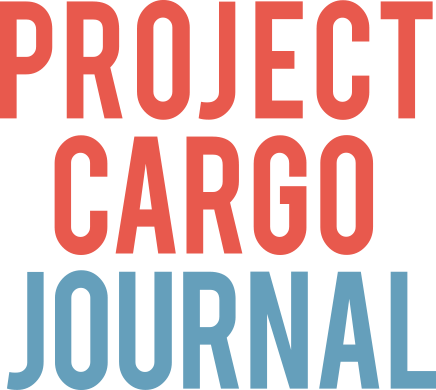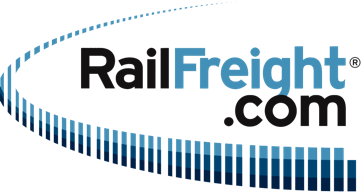Material transfer rates and lower environmental impact are twin pressures facing modern conveying systems.
Conveyor belt manufacturers face two major demands from customers: to increase productivity of material transfer and to reduce the environmental impact of the conveying process.
Seemingly, these two might be seen to be mutually exclusive, as mitigating dust emissions into the environment, for example, might hamper the speedy movement of material from pit to port.
Dry bulk terminals located near urban areas have, for many years, been forced to consider the impact of operations on their near-neighbours, while terminals in remote areas are subject to greater pressures to minimise the effect of conveying on surrounding natural habitats. But these twin objectives need not clash.
Peruvian gateway
Transportadora Callao operates a dry bulk terminal in the port of Callao, Peru. Mines located in central Peru transport concentrates to the warehouses located 3 km from the port. This required a transfer method affording total protection to prevent particle emission into the atmosphere.
Overlooking the Pacific Ocean, Callao is the prime maritime gateway for Peru’s capital, Lima. With 877,000 inhabitants, it is also one of the largest cities in the country in its own right, hosting Peru’s biggest airport and one of the most important fishing and commercial ports in South America.
Peru is one of the world’s major producers of mined raw materials, and about 75% of the country’s imports and exports are handled in Callao. In order to satisfy demand for its mining output, the Peruvian government decided to expand the port. Besides additional storehouses, the plans also foresaw the largest, most modern shiploading terminal in the country.
Peru also wanted to change the way the raw materials were transported to the shiploading areas. Before construction of the terminal, trucks were used to transport the concentrates from the warehouses to the terminal.
Down the pipe
So, Transportadora Callao selected Beumer to build a pipe conveyor to transport zinc, copper and lead concentrates from different mining companies, from the warehouse to the terminal.
With its ability to navigate curves in three dimensions, the conveyor can be adapted to its routing course of some 3,000m. Even more importantly, the system prevents the concentrates from coming into contact with the environment, and ensures dust-free transfer to a ship’s hold.
Beumer was responsible for the engineering and supply, including the steel structure, supervision of the installation and putting the pipe conveyor into operation.
“Since Transportadora Callao started operations, the number of truck drives has been reduced by 130,000 a year,” explained the terminal operator’s CEO, Victor Sam. The company, a consortium of five enterprises from the mining and port industries, obtained a licence from the state for building and operating the necessary infrastructure.
Beumer’s project partner was Helmut Wolf from Beumer Group Austria GmbH. “Together with the responsible persons from the customer, we developed a solution that is perfectly adapted to the routing and the ambient conditions,” he said.
Due to its enclosed transport, the pipe conveyor not only protects the environment against harmful impacts during the transport of lead concentrate, but it also allows conveying over long distances and navigation through tight curve radii. Due to its ability to navigate curves, the belt conveyor requires fewer, or even no, transfer towers, dependent on its length and the available curve radii. This results in cost-savings for the customer, and allows Beumer to customise the system to the individual routing.
Durable conveyor belts are used, guaranteeing tensile strength. The engineers use different dimensioning programs to determine the ideal belt design. They use them to calculate tractive forces and forces that arise during acceleration and deceleration, as well as determining possible curve radii. Beumer provides tailor-made feasibility studies for each project.
Another advantage is the reduced noise emission that the system provides. This is ensured by special idlers, as well as low-noise bearings and selecting the right conveying speed. “This improves the quality of the employees’ dayto-day work environment,” said Wolf. Victor Sam added that the “noise measurements along the pipe conveyor resulted in values that are consistently far below the permitted limits”.
Speedy
In addition to the minimal environmental impact, the system also provides the terminal operator with a high level of productivity.
“Due to the system design and the required capacity, we designed it with a diameter of 400mm,” explained Wolf. “The conveyor transports 2,300 tph, at a speed of 4.5m per second, and is driven by three motors with a capacity of 650 kW each. We equipped the system with filters, strippers, a dedusting unit and a control system.
”The process is practically free of faults, Beumer claims, and, above all, safe. Trucks or trains transport commodities from mine to storage, from where they are transported to the open access station. There, the concentrates are received by a feeding 43m belt conveyor that transfers the material to the pipe conveyor at a height of 6m. A dedusting unit ensures that no material is emitted during this process.
“We equipped the feeding belt conveyor with a metal detector and an electric magnet,” said Wolf. “This prevents damage of the downstream pipe conveyor by metal parts.” At the end of the route, the conveying system runs along the seaside in the naval port of Callao to the transfer tower. Here, the belt opens automatically. It transfers the material to another belt conveyor, which conveys the ore to the ship loading system.
Sam added that the system has caused a significant increase in speed. “As much as 500% for loading concentrates, and it has reduced ship’s waiting time until loading by more than 80%,” he said. “These mean savings for exporters, and so improve the competitiveness of the country’s mining industry.”
Meeting point
A big challenge was integrating the pipe conveyor into the existing environment. The Beumer system is the interface between the individual belt conveyors from the various companies. “When managing the project, we had to meet several official requirements,” said Wolf. The project represents a concession by the state of Peru given to Transportadora Callao, which commissioned Odebrecht Perú Ingeniería y Construcción, the local subsidiary of Brazilian civil engineering firm Odebrecht, with the execution. Buenaventura Ingenieros supervised the project. Odebrecht, in turn, commissioned Beumer with the design of the entire line section onshore.
The onshore section starts at the open access, where the concentrate is transferred from the warehouses. The pipe conveyor then passes a refinery and a military area. “That was the specified routing we had to observe,” explained Wolf. Near the refinery, the systems had to be additionally equipped with fireproof covers.
Due to this engineering work, Transportadora Callao is now able to handle ships of up to 60,000 dwt without obstructing the work in Callao port’s other terminals.
Beumer also bundled its expertise across various industries, and established different Centres of Competence to offer support for companies like Odebrecht and Transportadora Callao. The pipe conveyor sector is one such centre. It is responsible for sales and project management worldwide, collecting and preparing the knowhow of each regional group company, and passing it on to the group’s global experts, such as Helmut Wolf and his team.
“Beumer’s technical team has proven its professionalism and stand-by duty, during construction and operation, and after 1.5 years in operation and more than 4 Mt of transported concentrates, we can attest that the set goals have been reached,” explained Sam.
Transportadora Callao also recently signed a teleservice contract with Beumer, so that the engineering firm’s specialists can eliminate possible malfunctions in the system. If necessary, service staff will go to Callao to make necessary adjustments to prevent malfunctions and machine breakdowns, which could lead to long downtimes.
Clean your belts
Allowing material residue to accumulate on conveyor belts is a significant cause of downtime, leading to lost productivity, as well as a workplace hazard. It also adds to operational costs for any plant that relies on moving large quantities of material. So, a system that can clean belts qui ckly and efficiently offers a number of benefits.
American firm Martin Engineering recently launched a new belt cleaner that promises reduced costs.
The QB1 Cleaner HD was made possible by adapting the manufacturing process. Instead of fabricating the main frame from individual steel profiles welded together, the frame for the new design is roll-formed out of a single piece of steel. This produces a strong and durable component, the company claims. The process also eliminates time-consuming steps such as having to weld any portion of the frame, which handily also makes the purchase price cheaper.
Martin’s Constant Angle Radial Pressure (CARP) technology is designed to maintain the most efficient cleaning angle throughout the belt cleaner’s service life. Parts can be replaced by one person in under five minutes without the need of tools, Martin added.
The new profile is less complex to produce, and, because it can be roll-formed or manufactured on a press brake, it will also be easier to source throughout the world from any Martin Engineering manufacturing site.
A special alignment system allows extremely precise installation, mitigating one of the most common problems that occur in the field, namely primary cleaners being installed in the wrong position.
Tracking system
In another move, Martin has introduced a more effective return belt tracking system. Building on the standard crowned roller, the company’s Roller Tracker uses “unique ribbed lagging” made of durable polyurethane to increase performance and wear life. The roller does not come into contact with the belt edge, which means no fraying and better tracking for single-direction or reversing belts.
The result, the firm claims, is more centred cargo loading, less spillage and increased safety from the hazards of belt wander. In turn, this means higher productivity and a lower operational cost.
Used for lower tension belts from 500-1,500mm in width, running at a speed of up to 5m per second, crowned roller trackers have a slightly larger diameter at the centre than at the edges. Realignment is based on the basic principle of the belt contacting the raised portion of the raised portion of the roller (the crown) first.
When the belt wanders off-centre, the assembly tilts to the opposing side and steers it back toward the normal position. By retaining a consistent path on the return side, the belt passes over the tail pulley and enters the loading zone centred, making for equal cargo distribution and reduced spillage.
Previous designs had lagging made of a single smooth piece of rubber or soft gripping material, to retain a hold on the belt and train it back into position. Being in constant contact across the entire surface of the belt caused the material to wear quickly, said Martin, requiring frequent and expensive replacement. The Roller Tracker is claimed to improve on this technology, with ribbed lagging made from thick, rugged polyurethane.
Covering the entire belt width using less surface contact, the ribbed design reduces lagging wear and improves resistance to better train the belt back to centre. This design is also very cost-effective to manufacture, contributing to a reduced purchase price.
Do you want to read the full article?
Register to continue reading
By registering you will have:
- Access to all Premium content
- Discount on selected events
- Full access to the entire digital archive
- 10x per year Digital Magazine
Having problems logging in? Call +31(0)10 280 1000 or send an email to customerdesk@worldcargonews.com.




